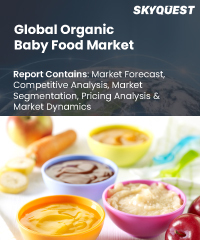
Report ID: SQMIG30I2146

Report ID:
SQMIG30I2146 |
Region:
Global |
Published Date: November, 2024
Pages:
242
|
Tables:
64 |
Figures:
77
Drivers
Customers are Motivated to Buy Organic Food Items by Child Health Concerns
Using Mainstream Media for Promotion and Marketing
Restraints
Intense Competition
Our industry expert will work with you to provide you with customized data in a short amount of time.
REQUEST FREE CUSTOMIZATIONWant to customize this report? This report can be personalized according to your needs. Our analysts and industry experts will work directly with you to understand your requirements and provide you with customized data in a short amount of time. We offer $1000 worth of FREE customization at the time of purchase.

Report ID: SQMIG30I2146